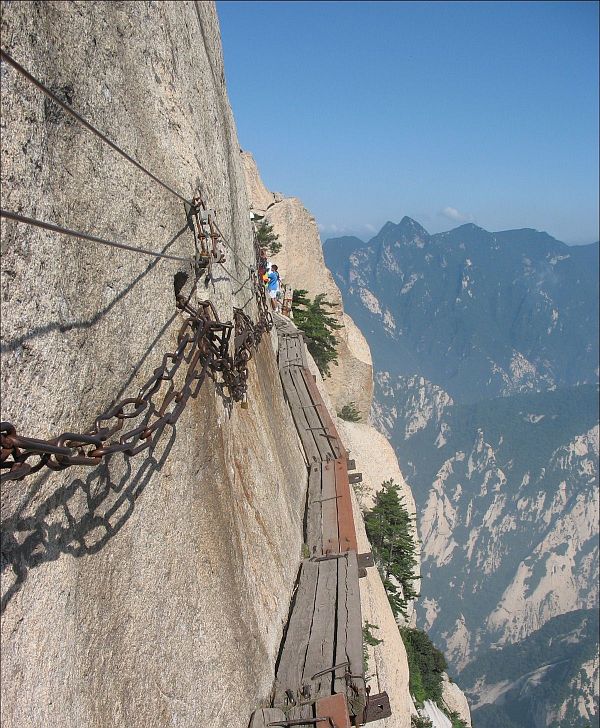Ci sono due serie di montagne sacre in Cina: un gruppo per la religione Taoista e un gruppo per la religione Buddhista.
Quelle del Taoismo sono conosciute come 五岳 (Wǔyuè), quelle del Buddhismo sono le 四大佛教名山 (Sìdà Fójiào Míngshān).
Taoismo:
- 泰山 (Tài Shān) nello 山东 (Shāndōng)
- 华山 (Huà Shān) nello 山西 (Shānxī)
- 衡山 (Nán Héng Shān) nello 湖南 (Húnán)
- 恒山 (Běi Héng Shān) nello 山西 (Shānxī)
- 嵩山 (Sōng Shān) nello 河南 (Hénán)
Buddhismo:
- 五台山 (Wǔtái Shān), 山西
- 峨眉山 (Éméi Shān), 四川 (Sìchuān)
- 九华山 (Jiǔhuá Shān), 安徽 (Ānhuī)
- 普陀山 (Pǔtuó Shān), 浙江 (Zhèjiāng)
Tutte sono famose mete turistiche, e la 华山 in particolare ricorre spesso nelle varie catene di sant’Antonio delle mail perchè il panorama è mozzafiato e la via per arrivare in cima è terrificante.

Nell’immortale capolavoro “La tigre e il dragone“, Jen è in un ristorante, viene sfidata, poi combatte e distrugge tutto.
Mentre combatte grida:
I am the desert dragon.
I leave no trace.
Today I fly over Emei. Tomorrow…
I’ll kick over Wudang Mountain!
Emei è una delle montagne del buddhismo; 武当 (Wudang) nello 湖北 (Húběi) è una montagna sempre sacra ma non così famosa da essere inclusa nelle “top 4″.